
Barton Damer, motion designer, digital artist and first-prize winner of Veer’s Creative Catalyst:
Design for Change Competition in January, talks about his journey from video and graphic
design into 3D motion.
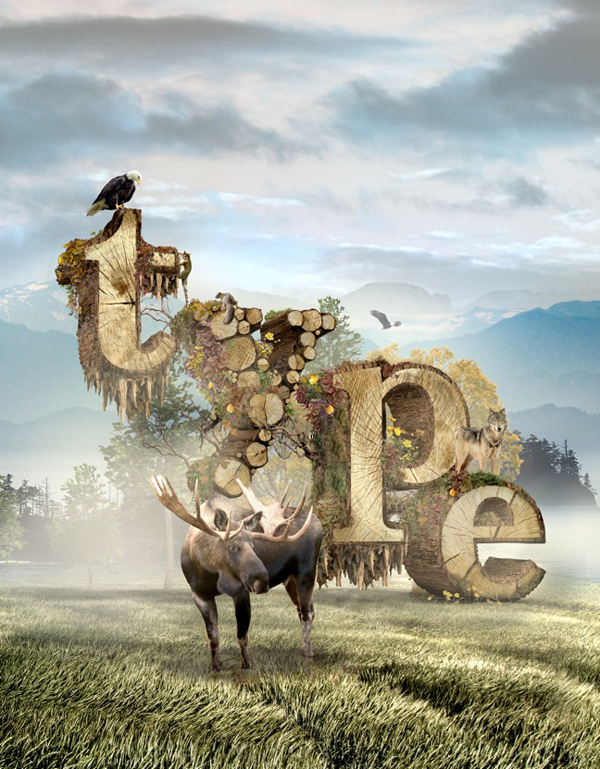 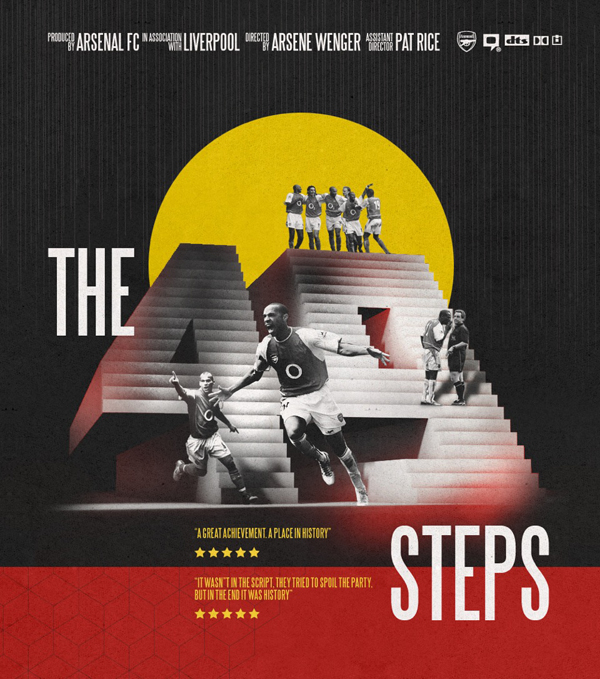 |
|
| Barton recently won first prize at the ‘Creative Catalyst: Design for Change Competition’ run by Veer, an international resource for the design industry. The competition requires entrants to produce a graphic design project for a social cause or charity, global or local, that is personally meaningful to them. The winning artist receives a £2000 donation for their selected organization and publicity for themselves across Europe.
His prize-winning project, titled ‘Malaria Kills’, is dedicated to Malaria No More, a charity committed to halting malaria. The piece centres on a beautiful African woman whose profile at a distance resembles the land mass of Africa, and then resolves into her face and hair, but on further observation gives way to unsetting details and elements making up the artwork. He briefly described his thinking behind it. “At first glance, I want it to look like the continent of Africa. Next, I want you to notice a beautiful African Queen. Then I want you to notice that there are a lot of disturbing things about this ‘Africa’ - malaria being a big one,” Barton explained. His portfolio includes many still projects. His professional roots are in print design, from the time when he started in the design industry 14 years ago, from laying out textbooks to digital illustrations. Then about six years ago he began to learn animation with Adobe After Effects, which eventually lead to learning MAXON Cinema 4D. |
|
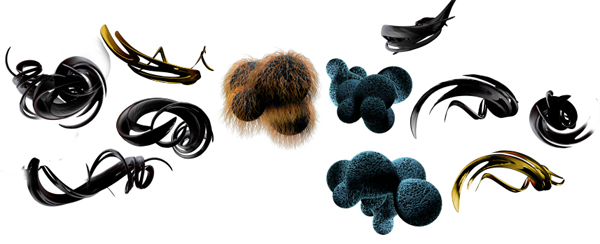 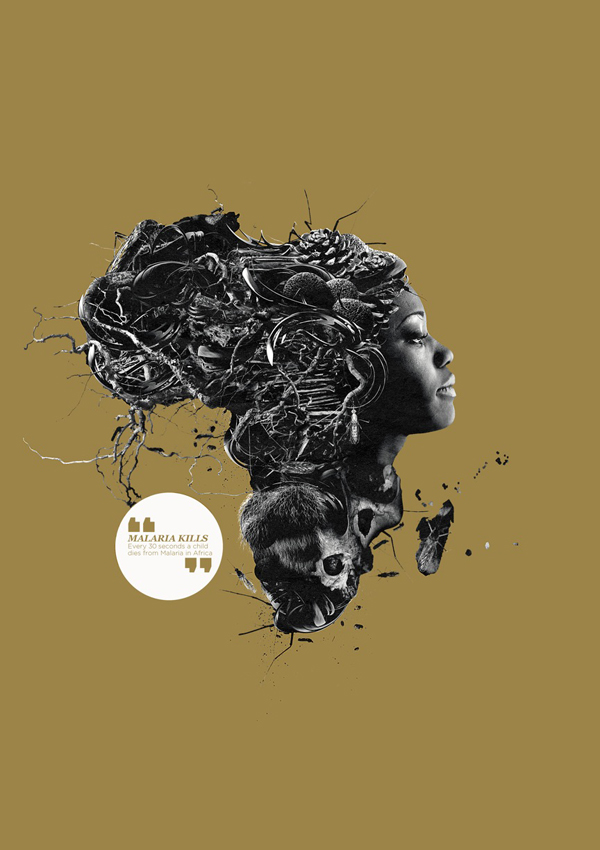 |
|
| Moving Into Motion Adobe Illustrator, Photoshop, After Effects and Cinema 4D are Barton’s main tools. Because his background is firmly rooted in Creative Suite, he still tends to rely on it for his C4D work, and in fact this is something he really likes about the software. “Things like vector paths and layers from Photoshop files all translate over into Cinema 4D. It made this new software a bit less mysterious because I could start modelling elements using vectors out of Illustrator,” he said. “Some friends also wanted to learn it at the same time as me, so we worked through it together, bouncing questions off of each other. “We would look for ways to apply knowledge from Creative Suite into C4D to avoid getting overwhelmed by the unknowns – like the Xpresso scripting system, rigging characters, intricate modelling – but taking advantage of immediately useful abilities. For example, I can now extrude text, start lighting it and make it look a lot more interesting than I could with the pseudo 3D effects in the CS. My initial experiences with it were as simple as that – creating some very basic 3D elements, and adding depth to illustrative work I was doing inside Photoshop.” Growing more familiar with the 3D potential opened new possibilities for his work. Before, he was relying on drawing something by hand or using a photograph that had the right angles and then having to composite a much larger scene. “These aspects can be very limiting if you don’t have the exact camera angle and don’t have the option to just go out and capture it yourself. 3D allows me to start building my own scene, changing the camera angles, and have everything work within that scene while building up the illustration.” |
|
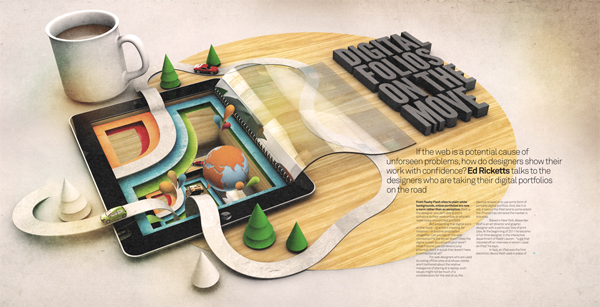 |
|
| Projects On different projects, he might be working with agencies, book publishers or direct clients. “With direct clients I have more opportunities to rely on my own expertise, which is why they come to me originally. But when an agency hires you, they usually already have a fairly firm concept of what they want you to execute. In other words, more creative freedom is involved on projects working directly with clients. Both types of work have attractions and advantages.” Although a still job may only take two or three days, while a motion project can take three to four weeks, Barton feels that in motion graphics, projects with creative freedom represent an opportunity, a bonus to the job itself. “On the other hand, working for a good agency relieves you of the pressure of developing ideas, and a good Art Director with valid ideas will improve the project. It’s good to continue working within a variety of project scenarios. Stretching Skills Abundant colour and textures are other identifying aspects of Barton’s work but the Malaria No More project is noticeably more subdued. “I had experimented with full colour on this piece but the more I worked on it, the more I wanted the continent of Africa to be obvious. In full colour, the ‘African Queen’ design dominated the work. Keeping things closer to monochrome really helped the silhouette of the continent to jump out. Furthermore I don’t have too much work in monochrome in my portfolio and like to do things to stretch myself. I wanted to see what I could do without relying on colour to pull it off.” Barton does quite a few projects for non-profit organizations. For example, he created artwork for the Salvation Army’s Oasis refuge for homeless teenagers in Sydney that they used as the design for printed T-shirts, sold to raise funds. He chose it because it is directed at young people on the edge and he’s aware of how impressionable and vulnerable teenagers can be. As he gets many requests from such organizations now, he has to choose on the basis of where he believes his work will have the greatest impact. |
|
  |
|
| Skateboarding Influence Working under the studio name ofAlready Been Chewed, Barton is located in Dallas, Texas, and takes on projects with Business Manager John Davidson who has recently joined him. He moved to Dallas about five years ago, and grew up in the Washington DC area. “I grew up skateboarding around the neighbourhood, a scene that that became a major influence on me – from the music I like, to fashion, and to my work and how I approach motion design. Much of the influence comes not only from my days spent skateboarding but also from when I started shooting and editing skateboarding videos.” Videos were in fact how Barton first got involved in motion design. When he first began as a graphic designer, he injured himself skateboarding and need a full knee reconstruction followed by a long recovery. “To stay in touch with the skate community, I started shooting and cutting skate videos, which quickly led to wanting to design graphics for them, which in turn opened my eyes to motion graphics. I hadn’t even known that type of work existed before.” From that point, getting more skilled at dropping the jpegs he created in Photoshop into Final Cut Pro to add titles and graphics to his footage, he then discovered After Effects and took to it immediately, learning quickly to animate his designs. “Early on, people assumed I was pretty good at it but I’m sure that was due to my years of design experience. I could do some basic animations that looked impressive, mainly because the original designs were good to start with,” Barton said. “I took off from there, later deciding that depth was lacking from my work, and that’s when I determined to learn Cinema 4D. But even now I use my print and illustration techniques as a ‘training ground’ for my animations – that way I can work on a design even when I’m still not sure how I’ll animate it, and figure out the animation later.” |
|
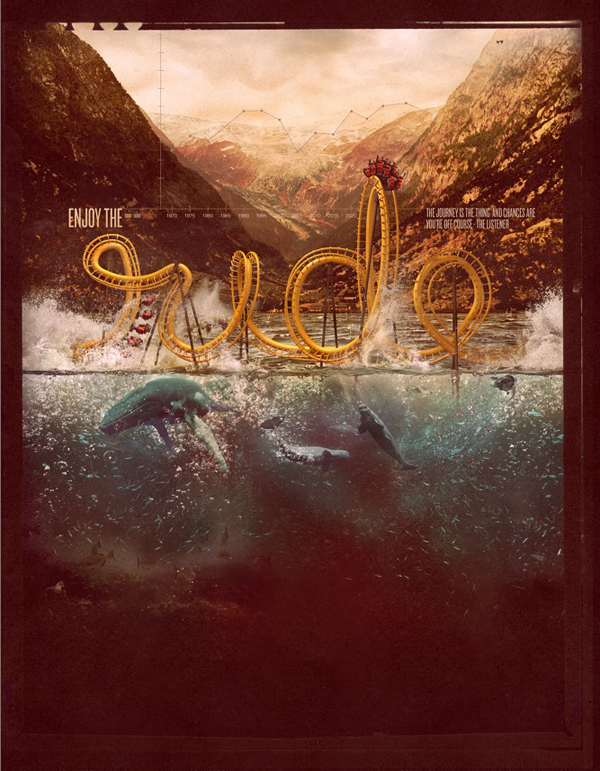 |
|
| Into the Future Sharing the knowledge and expertise he has gathered over time, from his days editing and finishing skate videos to graphic design to motion design, is also important to Barton. He has compiled and posted myriad tutorials on GoMediaZine, MAXON Cineversity and numerous other online resource websites and in magazines. At the end of January, he was a guest presenter with MAXON at the 3D User Group,3DPDX, in Portland, Oregon, and he has also made presentations for MAXON at NAB. He has completed corporate projects for clients such as Scion, CBS Sports and AT&T. His previous awards include the 2009 Digital Artist of the Year, sponsored by Computer Arts Magazine, 3D World Magazine and Intel. When reflecting on the future of his own work, he notes that he sometimes gets tired of a trend or style he’s been following and starts looking for something new. At the moment what is inspiring him is the work of Psyop and similar companies. He said, “Some are capable of creating TV spots that are more complex in their design and animation than most animated feature films - but are only 30 seconds long. As an artist, this idea appeals to me. Personally I wouldn’t want to work at that level of complexity on a 2 ½ hour movie for five or more years, but I could handle a 30-sec commercial! I think I’d like to go in that direction at some stage, though it may mean building up my studio with more equipment.”www.alreadybeenchewed.tv www.maxon.net |
|
| Words: Adriene Hurst Images: Courtesy of Barton Damer |
|


















